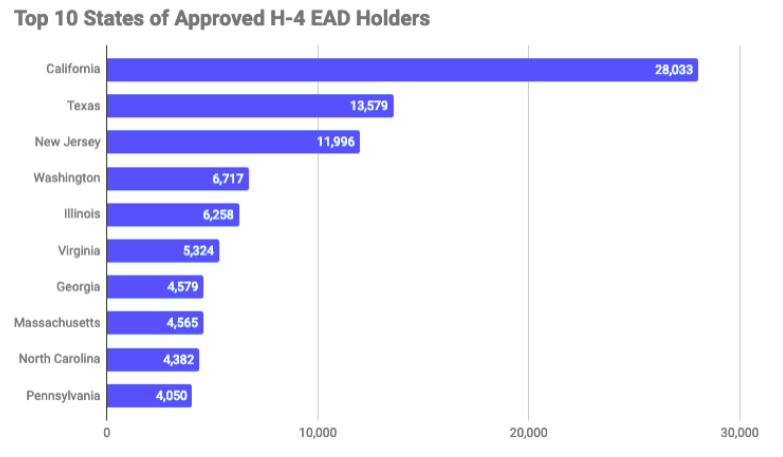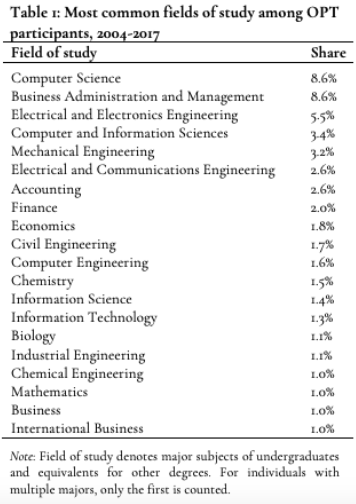Welcome to the first entry of a new weekly series from the Niskanen Center that aims to briefly detail a few compelling recent facts and findings in the world of immigration policy.
With so much happening in the immigration policy space—executive orders, legislative developments, regulatory changes, litigation updates, oversight hearings, new research, etc— it can be very difficult to keep up. For this reason, this series won’t focus on the main stories each week (such as major DACA litigation or emergency declarations on the border), but will instead delve into on a few overlooked takeaways that get lost in the flurry of activity.
Let’s dive right into this week’s takeaways—
#1: A new survey by Ike Brannon and Kevin McGee that was recently published in Regulation Magazine finds that of H-4 visa holders, nearly 7 out of 8 H-4 families made a major life decision based on obtaining employment authorization in the 2015 Department of Homeland Security (DHS) rule change. These decisions include having a child, buying a home, or deciding to go back to school. More than 90 percent of respondents reported H-4 work authorization was “very important to their family’s decision to remain in the U.S. and pursue permanent residence.”
The Trump administration is in the process of terminating the H-4 employment rule. In total, about 100,000 H-4 spouses could lose their work authorization. The latest data from the Congressional Research Service outlines where H-4 holders are, and the top 10 states are reflected in the chart below.
Takeaway: removing the ability to work for 100,000 people—more than 90% of which are women—fails to grow the economy while placing tremendous stress on immigrant families across the country.
#2: A new report by my colleague Jeremy L. Neufeld finds that 10 additional Optional Practice Training (OPT) participants working in a metropolitan area leads to five additional patents in that same area. Neufeld also finds positive effects on the average earnings in the regional economy, without discernible negative effects on unemployment.
The Niskanen Center received a treasure trove of data on foreign students from a Freedom of Information Act (FOIA) request, and the report is chock full of updated information on OPT fields of study, metropolitan areas of employment, universities attended, and more.
The Trump administration had considered restricting work authorization for certain foreign graduates, but seems to have deprioritized that regulatory initiative this year. The U.S. economy as a whole, and regional economies throughout the country, will be at a disadvantage if talented international students come to the U.S. for their education, but are forced to leave upon graduation.
Takeaway: Recruiting, retaining, and capitalizing on foreign graduates should be a core component of the U.S. innovation agenda in the 21st century.
#3: Earlier this month, a northern California federal court ordered the U.S. government to resume processing of about 2,700 children and family members who applied and were approved for the Central American Minors (CAM) program, before it was terminated by the Trump administration. The minors were awaiting final security checks and medical exams when the administration stopped all processing back in 2017.
I wrote last June about the case, and called for the re-launch of the CAM program as a way to transform some irregular migration north into more orderly channels—especially for minors. As the flow of Central American families seeking asylum only continues at our southern border, we must consider doing more than just relying upon the punitive measures advanced by the Trump administration. The right approach to the exodus from Northern Triangle countries is finding the balance between protection and prevention. Minors with asylum claims should be offered the chance to apply for protection from within their country to stop the horrific violence, sexual assault, and abuse that happens on the journey north. The government should re-process those 2,700 CAM applicants who had their cases paused.
Takeaway: lawmakers should consider crafting a new CAM program that builds upon the successes and failures of the original program as part of a more comprehensive approach to Central American forced migration.
Recommend Weekend Readings:
Doris Meissner, The Real Border Problem is the U.S. is Trying to Stop the Wrong Kind of Migrants
Michael Hayden & Matthew Olsen, What Emergency?
Donald Boudreaux & Jeffrey Mason, Thanks to Trump, Refugees Fleeing Authoritarian States Are No Longer Welcome

